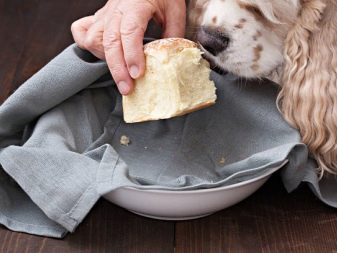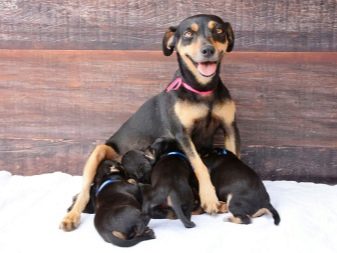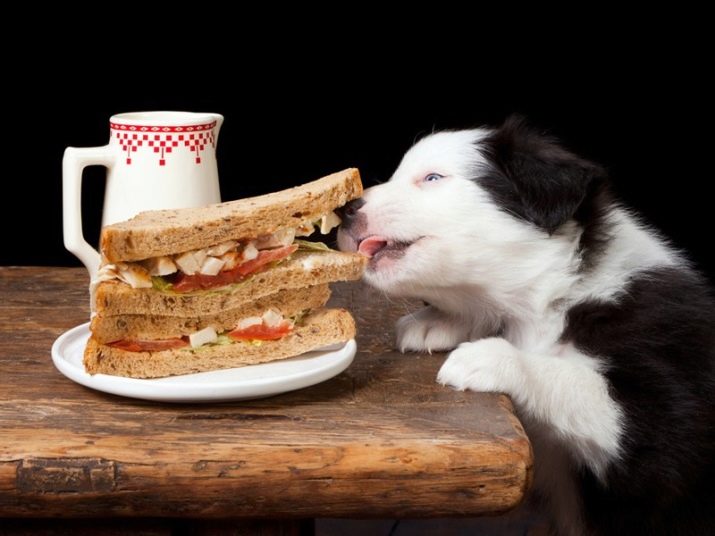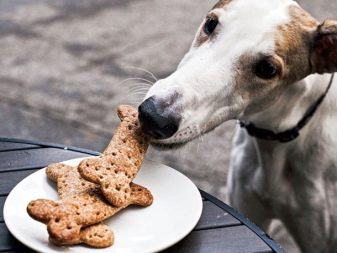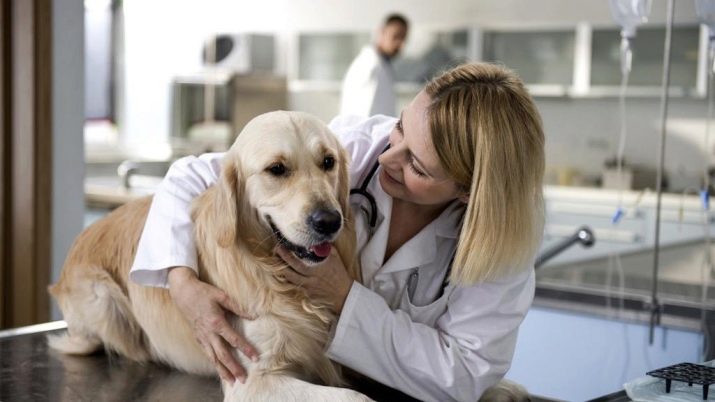Every dog owner is familiar with this situation. The kitchen, the hostess, the dog with plaintive eyes, begging for some delicacy from the table, and, of course, many feel sorry for the pet, it seems that he does not eat up, and a piece of bread or butter sandwich flies to his side. But rarely does anyone think about whether it is possible to give bread to dogs, and what effect it can have on a pet's health.
Features of the dog
And now let's take a closer look at the peculiarities of the dog's digestive system and its difference from the human gastrointestinal tract.
The dog is a predator, and, unlike a person, its saliva does not release amylolytic enzymes that are able to break down carbohydrates. Their production begins only at the time of the first collision with carbohydrate food, so the animal's organism adapts to cohabitation with a person. The length of the intestine is also different, with predators it is shorter. As a result, they need more easily digestible products that do not cause undue stress on the digestive tract.
The dog has got a stomach from a wolf, has elastic walls and is able to stretch, acquiring a volume of up to 2.5 liters. Gastric juice consists of pepsin, enzymes, water, and a small percentage of salts. Under the action of pepsin, which works more efficiently in an acidic environment, meat entering the stomach and even bones swell, this is how food is prepared for absorption. And in the intestine, which is 1/3 relative to the body, there is a further assimilation of food, which lasts about 15 hours. In humans, the intestines are 1/8 longer in relation to the body, therefore, in humans, the complete process may take twice as long.
As can be seen from the above features, the quadruped's digestion is very different from that in humans, although the dog's body can adapt to the nutrition of any food, of course, not without harm to the pet's health.
Pros and cons of delicacies
And yet there are times when a dog gets a piece of fragrant bread or a tasty crouton. This is valid at certain times.
- As a reward for work done on which energy was expended. It is better to give in the form of crackers, just so it will not harm the health of the pet.
- Also, the use of bread is justified in the winter period for street (aviary dogs) and stray animals. For the latter, perhaps the bread will be salvation.
- Crackers will be useful for the teeth, due to its porous structure, stale bread will help to remove plaque.
- And rye crackers contain lysine, which has a positive effect on the immune system of the animal.
That's all the positive things that carries bread. But there are also negative ones that you need to know about. If this product is abused, the dog may make certain illnesses.
- Obesity. Bread is a high-energy product; if it is given, then it is necessary in small quantities. The most important thing is to always control the amount of carbohydrates in the diet, especially in sedentary pets, as this is fraught with obesity and concomitant diseases of the joints and the heart. Here it is necessary to take into account pedigree features, for example, Labrador, Pug, Chinese Crested, French Bulldog have a predisposition to weight gain, for these breeds bread is contraindicated.
- Diseases of the gastrointestinal tract. Digestion of bread is accompanied by additional energy expenditure of the body and an increased load on the digestion and other organs. Bakery products, especially if they are in excess, can cause frustration or constipation.
- Allergic reactions. They are accompanied by swelling of the paws, redness of the ears, hair combing on the skin. Allergies are often caused by baked goods with raisins, sesame and other additives. The following breeds are at risk here: Cocker Spaniel, Bulldog, Standard Schnauzer, Dalmatian, Labrador Retriever, Irish Setter.
- Sweet muffin can provoke caries and diabetes.
Nuances of use
Puppies can be given rye crackers and bran bread from 3-4 months as a reward. When growing up, puppies usually show high activity and they need additional sources of energy, especially during training. It does not carry any other additional functions for puppies, so if necessary, you can replace it with cereals, which will be a source of carbohydrates. For pregnant dogs, the use of bread is acceptable, but when choosing, be sure to carefully study the composition. Suitable black rye bread and without additives.
And in order to avoid risks while feeding puppies, it is better to exclude bread from the diet of a nursing female.
Based on all these features, it can be concluded that bread can be given to the dog, but there are certain rules that must be followed:
- do not give bread every day;
- if the pet has a weakness for bakery products, use them only as a reward;
- for breeds and sedentary pets that have a predisposition for obesity, it is better to exclude flour products from the diet;
- eliminating bread from the diet is also necessary for aging animals;
- in no case can not give bread with mold, even if it is cleaned;
- sandwiches with butter and various sauces can cause diarrhea;
- bread made from yeast dough is hard digested in the pet's stomach;
- fresh bread is also not suitable for food and can cause fermentation in the gastrointestinal tract, which can provoke colic;
- Do not give the pet a dough, this can lead to serious consequences, even death.
How to choose the best option?
At the moment there are a large number of recipes for making bread with various components. On the shelves in stores there are a variety of baking options. Some of them are suitable for dogs.
- In the diet, you can use crackers from rye or grain bread. Stale bread is easier to digest from a pet.
- In the diet also suited biscuit. True, in small quantities.
- You can use toast, but not very fried and without the use of various pastes and sauces.
- You can please your pet with homemade rice or oatmeal cake using vegetables. Dough should be kneaded in water.
There is pastries, which give the animal is not recommended. This list includes certain products.
- Products from yeast dough. They can cause fermentation in the stomach, bloating and gas.
- Bread with additives - onions, garlic. It may cause irritation of the gastric mucosa. In addition, onions and garlic contain a substance that damages hemoglobin, which carries oxygen in the body. This can lead to anemia and poisoning.
- Corn and soy bread hard to digest and can provoke vomiting and intestinal upset
- Muffin with chocolate, raisins, jam, nuts, jams and other sweets in the beginning will be pleasant to the pet, but in the process of digestion they will cause heaviness in the stomach and painful sensations. And chocolate is poison for dogs.
- Fried flour products Home cooking is also not allowed.
What to do in unforeseen situations?
It may happen that the pet stole the bread or someone unknowingly treated him with an undesirable delicacy. In this case, do not panic. Provide the animal with enough water and watch the pet for several hours. For the slightest signs of poisoning, vomiting, bloating and diarrhea, use zoonorm or enterosgel. When diarrhea shows a hungry diet from 12 to 24 hours. Enema helps with constipation.
And it is better to contact a veterinary clinic for help from a specialist.
After weighing all the pros and cons, you can decide for yourself whether to give your dog bread or not. But note that by visiting a nearby pet store, you can find treats that will be much healthier and safer for your pet and will easily replace bread. And remember, whatever delicacy you choose, it should not exceed 10 percent of your daily diet.
About what you can not feed the dog, see the video below.





